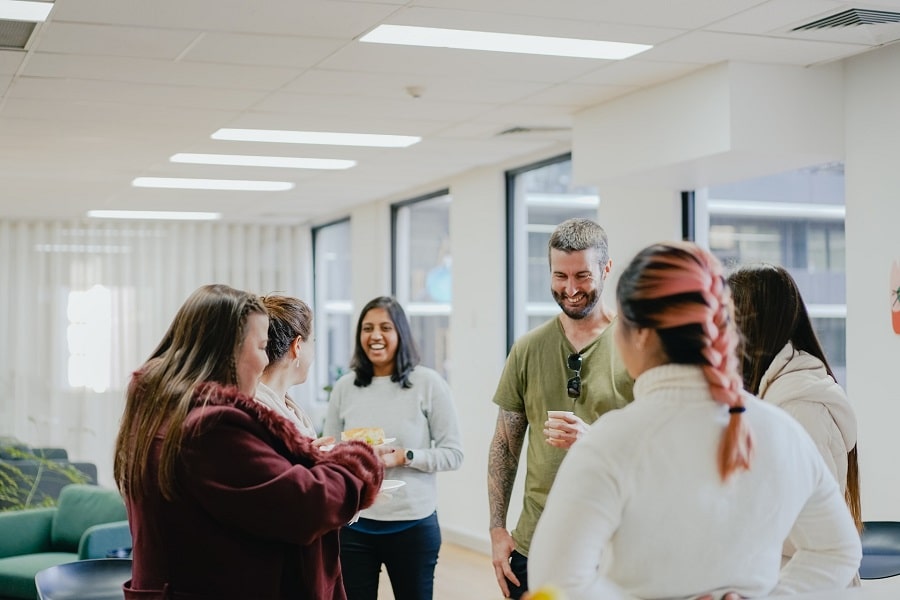Use Intentional Inclusion to Improve Workplace Culture
Psychological safety at work is crucial for fostering creativity, collaboration, and innovation. When employees do not feel psychologically safe, it can have negative impacts on their mental health, job satisfaction, and productivity, as well as the overall performance and success of the organization
Here are three areas to be aware of and act on if you see them happening on your team:
When people feel their opinion doesn't count
Imagine being in a team where only a fraction of members' opinions count. Where ideas are dismissed, and mistakes are frowned upon. It's a recipe for disengagement and lack of commitment. Unfortunately, this is the reality for many employees in today's workplaces, where psychological safety is often overlooked.
Take Barbara's example. She was part of a business school team with four members, but one dominant individual took over and made all the decisions. The rest of the team felt silenced, their opinions dismissed. This lack of psychological safety stifled their creativity and engagement, leading to a subpar team dynamic.
But Barbara's story is not unique. Research shows that only 30% of employees feel like their opinions count at work. This lack of psychological safety can have detrimental effects on employees' ability to express themselves, contribute ideas, and feel connected to their organization.
When people aren't accepted for who they are
Creating psychological safety is not easy, especially when it comes to embracing diversity and overcoming biases. Affinity bias, confirmation bias, and in-group bias are the "terrible three" that often perpetuate breaches in psychological safety. These biases can hinder open acceptance of differences, hold mistakes against people, and create fear of speaking up about nagging issues.
When people don't feel safe to make mistakes
Fear of making mistakes can lead to a culture of perfectionism, where employees feel pressured to constantly perform at their best and avoid any errors. This can create a toxic work environment where mistakes are frowned upon or punished, and employees feel the need to hide their mistakes or avoid taking risks altogether. This fear of making mistakes can hinder creativity, innovation, and learning, as employees become reluctant to try new things or share their ideas openly.
When mistakes are not seen as opportunities for learning and improvement, employees may feel anxious, stressed, and unsupported. They may be afraid of being blamed, judged, or penalized for their mistakes, which can lead to increased stress levels and reduced job satisfaction. This can also create a culture of blame and finger-pointing, where employees may try to shift blame onto others to protect themselves from consequences.
How to Create a Psychologically Safe Environment: Jenny's Journey
So, how can leaders ensure they are creating psychologically safe environments? Look for three key measures: people being openly accepted for their differences, mistakes not being negatively held against individuals, and the ability to raise concerns without fear of repercussions.
It took Jerry, a driven and accomplished executive leader, a fraught meeting with one of her team members to recognize the need for consciously working on a culture of psychological safety. Jenny's focus on results and excellence had blinded her to the effect she was having on the team.
Jenny shared: "I remember the moment when Malcolm approached me with his concerns. I could see the frustration in his eyes as he shared how he didn't feel safe on our team and felt reprimanded for a project that didn't go as expected. It struck a chord with me because I had always prided myself on being open to taking risks and learning from mistakes, but here was one of my team members who didn't feel the same way.
"I listened attentively to Malcolm's concerns and reflected on my own behavior as a leader. I realized that I had been less tolerant of mistakes on my team, despite having made mistakes myself in the past. I also recognized that I had unintentionally formed closer bonds with some team members over others, leading to unequal treatment. It was a wake-up call for me to acknowledge my own biases and take action to create a more inclusive and empowering work environment.
"I had an "aha" moment when I realized that I had not been providing Malcolm with the same level of psychological safety that I had received in my own career. I understood that psychological safety was crucial for fostering a culture of innovation and inclusivity. I knew I had to make a fundamental shift in my leadership approach.
"I took action by scheduling one-on-one meetings with each team member to better understand their perspectives on making mistakes and taking risks at work. I listened actively without defensiveness and explained how I was going to change my leadership style based on their feedback. I familiarized myself with the "crack the code" framework and actively worked on creating psychological safety in my team.
"I encouraged open communication and created a culture where team members felt comfortable expressing their ideas and concerns without fear of judgment. I acknowledged mistakes as opportunities for learning and promoted a growth mindset. I made a conscious effort to treat all team members equally, regardless of their gender or background, to foster inclusivity and fairness.
"Over time, I started noticing positive changes in my team. Team members became more engaged and started sharing their ideas and perspectives more freely. They felt empowered to take calculated risks to drive innovation, knowing that mistakes were not punished but seen as opportunities for growth. Malcolm, in particular, underwent a significant transformation. He felt safe to bring forth his creative ideas without fear of repercussions and took ownership of his work. His performance and engagement improved, and he became a valued contributor to the team's success.
"Through this journey, I learned that being a leader meant more than just taking risks and learning from mistakes. It meant creating a supportive and inclusive environment where team members felt safe to express themselves and take risks without fear of retribution. I needed to be willing to listen, reflect, and take action before I could make an impact on my team's dynamics and improve engagement and performance."
In conclusion, Jerry's journey towards improving psychological safety within her team was a transformative one. By actively listening, reflecting, and taking action, she created an inclusive and empowering work environment where team members felt safe to express themselves, share ideas, and take calculated risks. Her efforts resulted in increased engagement, improved performance, and a culture of innovation. Jerry's commitment to prioritizing psychological safety in her leadership approach exemplifies the importance of creating a positive and supportive work environment for team success.

Related Module:
Further Resources
CRESTCOM PODCAST: How Organizations Can Get DEIB Right with Martine Kalaw, Elevation Strategist (Listen Now)
Leading Below the Surface: How to Build Real (and Psychologically Safe) Relationships with People Who Are Different from You - LaTonya Wilkins (View on Amazon)
